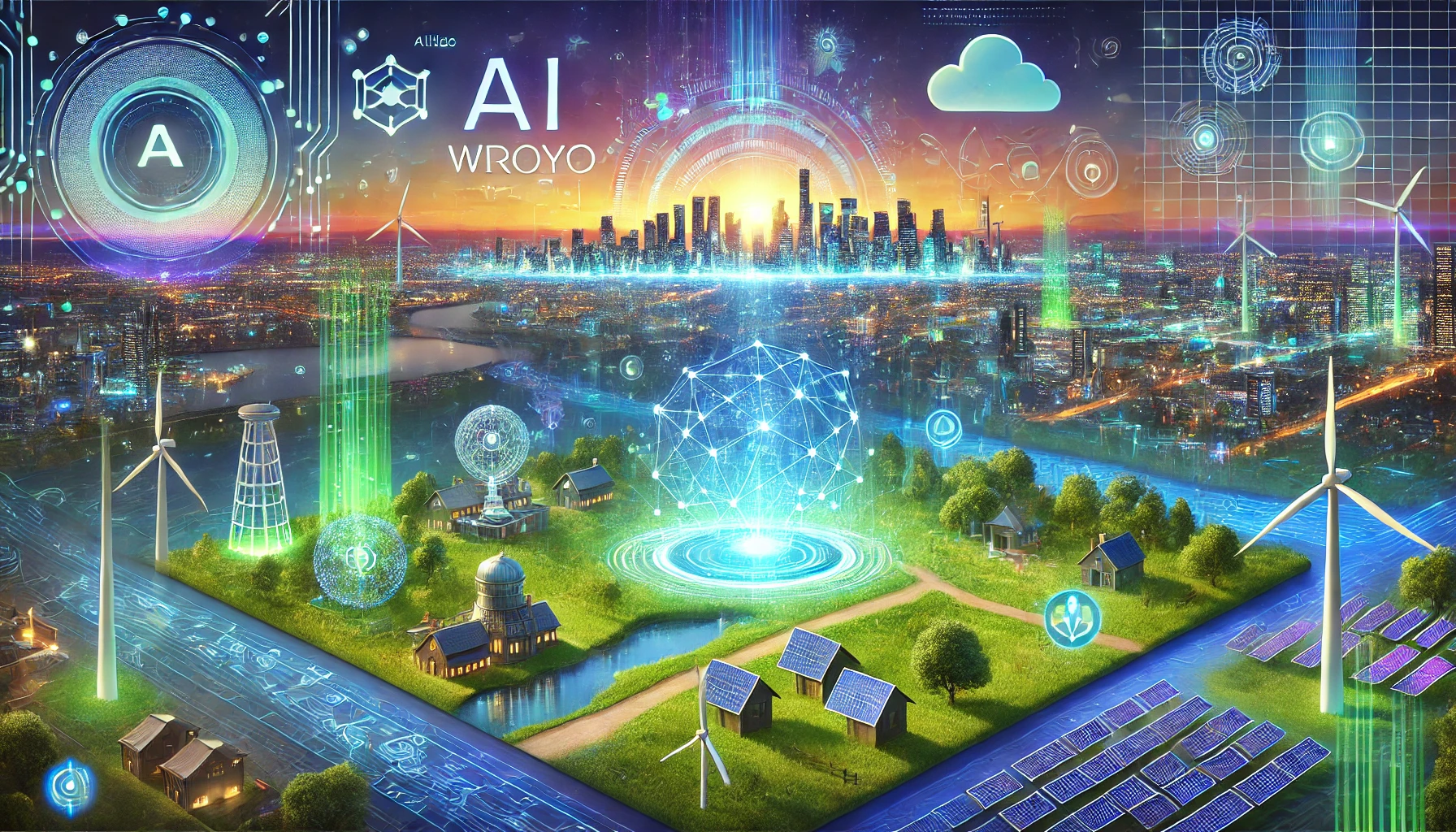As we stand on the brink of a new era in telecommunications, it’s clear that the future is brighter, faster, and more connected than ever before. With the world just beginning to unlock the full potential of 5G networks, Japan is already pioneering the next leap in technology: 6G. This new generation of wireless technology promises to revolutionize the way we live, work, and interact, offering speeds, capacities, and capabilities far beyond what we currently can imagine.
6G is not just an incremental step up from its predecessor; it’s a giant leap forward, aiming to integrate seamlessly with emerging technologies like artificial intelligence (AI), the Internet of Things (IoT), and quantum computing. This integration will pave the way for advancements that could only be dreamt of with 5G, such as holographic communications, ultra-precise location tracking, and the realization of truly smart cities.
The journey to 6G is filled with challenges and opportunities. It requires not just technological innovation but also a concerted effort from governments, industry, and academia to make this vision a reality. In this exploration, Japan is leading the charge, leveraging its storied history of technological advancement to shape the future of global communications.
What is 6G Technology?

6G technology is the sixth generation of wireless communication technologies, succeeding the 5G networks that are currently being deployed around the world. While 5G has brought significant improvements in speed, latency, and connectivity, 6G aims to surpass these advancements, offering data rates that could reach terabits per second, ultra-low latency, and massive network capacity.
The essence of 6G lies in its ability to provide ubiquitous, reliable communications that can support the massive amounts of data generated by the IoT, AI applications, and more. It’s envisioned to support a fully interconnected world, where devices communicate seamlessly not only with each other but also with the environment around them, enabling smarter, more efficient services and systems.
Moreover, 6G is expected to be more than just a network for mobile communications. It’s seen as a foundational technology that will underpin critical infrastructure, healthcare, transportation, and even environmental monitoring, transforming virtually every aspect of our lives and work.
The Role of Japan in 6G Development

Japan has always been at the forefront of technological innovation, and it’s no different when it comes to 6G. The country’s government, along with leading tech companies and research institutions, has laid out ambitious plans to lead the development and deployment of 6G technology. By investing heavily in research and development (R&D), Japan aims not only to bring 6G to life but to ensure that it sets the global standard for this next-generation technology.
The Japanese government has announced significant investments in 6G R&D, focusing on key areas such as advanced semiconductor materials, next-generation network architectures, and innovative communication methods. These efforts are complemented by initiatives to foster international collaboration, recognizing that the challenges of 6G are too vast for any one country to tackle alone.
Japan’s leadership in 6G is not just about technological advancement; it’s also about economic strategy. By setting the pace in 6G development, Japan aims to secure a competitive edge in the global market, positioning its companies as leaders in the supply of 6G equipment and services. This strategic approach underscores the importance of 6G not just to Japan but to the global economy.
Also Read: Explore the Future: Cutting Edge Technology Trends and Innovations
Key Innovations Driving Japan’s 6G Research
The pursuit of 6G is powered by a series of groundbreaking innovations, many of which are being spearheaded by Japanese researchers and companies. One of the key areas of focus is the development of new materials and technologies for advanced semiconductors, which are critical for achieving the high frequencies and efficiency required for 6G.
Another innovative area is the exploration of novel network architectures that can support the dynamic, distributed nature of 6G communications. This includes research into technologies like network slicing, which allows multiple virtual networks to run on the same physical infrastructure, and edge computing, which brings data processing closer to where it’s needed, reducing latency.
Additionally, Japan is investing in the development of new communication techniques, such as terahertz frequency bands and advanced antenna technologies. These innovations are crucial for overcoming the technical challenges associated with high-speed, high-capacity wireless communication, enabling 6G networks to support a wide range of new applications and services.
Potential Impacts of 6G on Global Communications

The advent of 6G holds the potential to transform global communications in ways that are hard to fully comprehend today. With its unprecedented speed and capacity, 6G could enable real-time, high-definition video streaming, immersive augmented and virtual reality experiences, and instant cloud-based computing, regardless of one’s location.
Beyond individual user experiences, 6G is poised to revolutionize industries by enabling truly smart infrastructure. In cities, for example, 6G could facilitate real-time data sharing between vehicles, pedestrians, and infrastructure, making roads safer and traffic more efficient. In healthcare, remote monitoring and telemedicine could become more reliable and effective, potentially saving lives by providing timely medical interventions.
Moreover, 6G could play a critical role in addressing some of the world’s most pressing challenges, such as climate change. By supporting advanced environmental monitoring systems, 6G networks could provide valuable data for climate research and help optimize energy consumption in smart grids, contributing to more sustainable development.
Comparing 5G and 6G: What’s New?

While 5G has been a significant upgrade from 4G, offering faster speeds and lower latency, 6G is expected to redefine the landscape of wireless communication completely. The leap from 5G to 6G is not just about speed; it’s about capacity, efficiency, and the types of services and applications that can be supported.
One of the most notable differences between 5G and 6G will be in their operational frequencies. 6G is expected to utilize terahertz waves, which occupy a higher frequency band than the millimeter waves used by 5G. This shift will unlock higher data rates but also presents new technical challenges, such as signal attenuation and propagation loss.
5G has a latency of less than 1 millisecond, while 6G is expected to have a latency of less than 0.1 millisecond, which is almost instantaneous. Furthermore, 6G aims to achieve near-zero latency, which is crucial for applications requiring real-time responses, such as autonomous vehicles and remote surgery. This improvement in latency, coupled with advances in AI and network slicing, will enable 6G networks to provide more personalized, reliable, and secure communication services.
Also Read: Exploring the Different Types of Technology: A Comprehensive Guide
Challenges in Developing 6G Technology
The path to realizing 6G is fraught with challenges, from technical hurdles to regulatory issues and global collaboration needs. One of the primary technical challenges is the development of hardware capable of operating at terahertz frequencies, which requires breakthroughs in materials science and engineering.
Another significant challenge lies in ensuring the security and privacy of the vast amounts of data that will flow through 6G networks. As these networks become more integral to critical infrastructure and everyday life, they will become more attractive targets for cyberattacks, necessitating advanced security solutions.
Additionally, the deployment of 6G will require a global effort to harmonize standards and regulations, ensuring that 6G technologies can operate seamlessly across borders. This will require unprecedented levels of international collaboration among governments, industry, and academia.
Japan’s Partnerships and Collaborations in 6G

Recognizing the importance of global collaboration in 6G development, Japan has been proactive in forming partnerships and alliances with other countries, companies, and research institutions. These collaborations aim to pool resources, share knowledge, and harmonize standards, accelerating the path to 6G and ensuring its global adoption.
One notable initiative is Japan’s collaboration with Finland, a country also at the forefront of 6G research. Together, they have launched joint research projects focusing on key 6G technologies, such as novel network architectures and advanced wireless communication methods.
Japan is also actively participating in international forums and working groups dedicated to 6G, contributing its expertise and learning from global partners. These efforts underscore Japan’s commitment to not just leading in 6G technology but also ensuring that it benefits people worldwide.
Future Predictions: How Soon Will We See 6G?
While it’s difficult to predict exactly when 6G will become a reality, industry experts and researchers suggest that we could see the first implementations of 6G technologies as early as 2030. However, for 6G to be fully realized and widely adopted, it will likely take several more years of development, testing, and deployment.
The timeline for 6G will depend on various factors, including technological breakthroughs, regulatory approvals, and the global economic climate. Nonetheless, the groundwork being laid today by countries like Japan will play a crucial role in determining how quickly and smoothly the transition to 6G can occur.
Conclusion: The Global Implications of Japan’s 6G Leadership
As Japan continues to lead the charge in 6G research and development, its efforts have far-reaching implications for the future of global communications. By pushing the boundaries of what’s possible, Japan is not only paving the way for its own technological and economic advancement but also shaping the future of connectivity for the entire world.
The journey to 6G is a testament to human ingenuity and the relentless pursuit of progress. It promises to bring about a new era of communication, characterized by unprecedented speed, capacity, and connectivity. As we look forward to this exciting future, one thing is clear: the innovations and partnerships fostered by Japan are laying the foundations for a more connected, efficient, and sustainable world.
Japan’s leadership in 6G underscores the importance of vision, collaboration, and innovation in addressing the challenges of tomorrow. As we stand on the cusp of this next technological frontier, the global community watches with anticipation, ready to embrace the myriad opportunities that 6G will undoubtedly bring.











